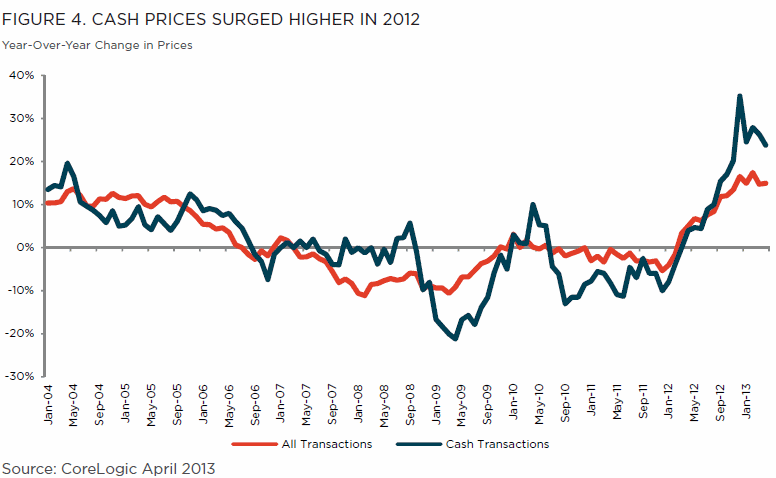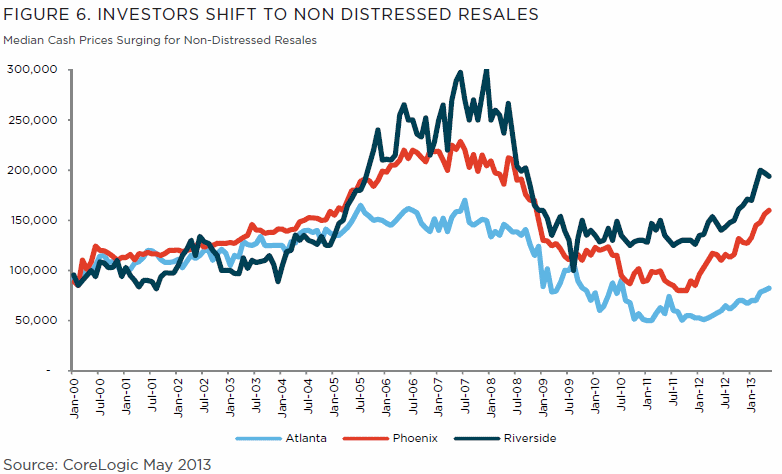"The death of cash is greatly exaggerated." CoreLogic concurs with that quote from Mark Twain in an article analyzing the impact cash sales has had on the real estate market over the last few years. The company says that there has been a surge in cash on corporate balance sheets during the recession to the highest levels ever recorded and a rapid expansion of currency in circulation; real estate has been heavily impacted by this.
CoreLogic's article "Real Estate and the Impact of Cash Sales" is one of several views of the current real estate environment in its newest issue of MarketPulse. The publication this month also includes "Fire Burn and Caldron Bubble" which looks at whether there is a real estate bubble, and "Recovery, a Long Row to Hoe," as well as summaries and recaps of other CoreLogic's other recent research and data releases.
Cash sales of real estate have risen in every sale segment and across a large number of geographies. CoreLogic says, and while these sales heavily contributed to the stabilization and recovery of the residential market, cash sales have peaked and are now receding. First-time and trade-up homebuyers will have to step up to replace cash buyers if the recovery is going to continue to recover.
Cash sales were fairly steady in the early 2000s, averaging 25 percent of home sales but as the market collapsed in 2007 and 2008 the share of cash sales rose swiftly, first in the bank-owned real estate area (REO) and then everywhere. The overall market share of cash stabilized in 2010 and has most recently been slowing declining but REO cash transactions continued to rise proportionately through 2012 even as REO sales themselves declined. In May 2013 cash sales had a 39 percent share, down from 40 percent a year earlier, an annual decrease that has occurred for 19 consecutive months. Among non-distressed sales the share was also 39 percent but that was a 2 percentage point drop from a year earlier.

It was cash sales that provided the floor for prices in 2009. Both cash and mortgaged sales peaked in 2005 but then mortgaged sales fell 78 percent to a January 2011 trough whereas cash sales ultimately declined 47 percent and bottomed out in January 2009. Since then cash sales have risen 39 percent, more than triple the 10 percent rate of mortgaged sales.
Without cash sales overall sales today would be much lower and the price declines would have been worse. More recently cash sales have helped fuel price increases dramatically in several boom and bust markets. Median prices for cash sales are up 24 percent from a year ago while prices of sales generally have increased 15 percent.

CoreLogic also notes the surprising surge in prices for non-distressed cash sales in the markets with the most investor activity which indicates that investors are moving from REO and short sales to non-distressed existing homes. The company also says it is a myth that the hardest hit markets have the largest shares or increases in cash sales.

The article concludes that the rapid rise in home prices will soon lead to a lower presence of cash sales as investor activity returns to moderate levels and traditional and new homebuyers will have to pick up the slack. While mortgaged sales have been increasing over the last two years, what remains to be seen is the impact of rising interest rates on the two segments. CoreLogic says it remains optimistic that rising prices and rates will not dissuade these buyers from entering the market.







